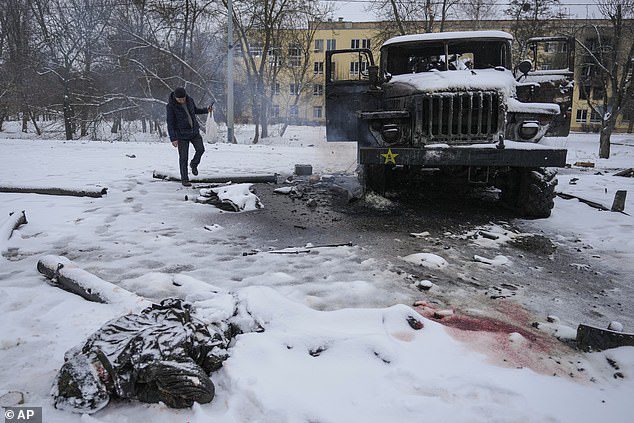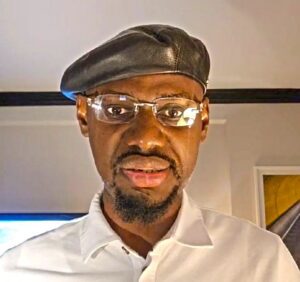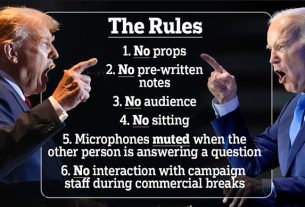The first shot tore into the back of the man just in front of him – close enough for the Russian private to feel a warm spray of blood across his face.
For a split second, his brain told him it must be Ukrainian fire. Then instinct kicked in: the angle was wrong. The rounds were coming from behind – from somewhere in the line of trees where their own support unit had been.
Someone screamed.
Then a second burst rattled the night. Muzzles flashed, stuttering in the darkness.
Within ten seconds, it all became clear: Russians were shooting at Russians.
When the firing finally died down, six soldiers lay crumpled in the frozen mud. One had tried to crawl away, leaving a dark trail of blood in the snow. All were Russian.
This was not ‘friendly fire’. This was a total breakdown, another case of Russian troops deliberately slaughtering their comrades.
Last week, I spoke to a contact in Ukrainian intelligence who told how, three winters into Vladimir Putin’s all-out invasion of Ukraine, Russia’s battered army is devouring itself. Across many fronts, amid the chaos of battle, panicked, under-trained conscripts are opening fire on their own comrades.

Russian commanders are shooting their own men for refusing orders, for failing to pay bribes and, sometimes, just for sport

Western officials estimate that Moscow has suffered more than 350,000 casualties – killed or wounded – since February 2022 when Putin’s invasion began
Commanders are shooting their own men for refusing orders, for failing to pay bribes and, sometimes, just for sport.
In scenes of medieval brutality, soldiers are being forced to fight one another to the death. But brutality is not control.
Western officials estimate that Moscow has suffered more than 350,000 casualties – killed or wounded – since February 2022 when Putin’s invasion began.
It is believed to be losing around 1,000 men a day on some sectors of the front they call the ‘meat grinder’.
Some units that began this war 800-strong are returning from the battlefield with fewer than 100 men, the survivors hobbling home without limbs or hope.
It’s a rate of attrition so severe that Moscow has been forced to replace the dead with prisoners, the middle-aged and the disabled, physically and mentally, simply to keep the trenches manned.
Around Avdiivka in the Donetsk Oblast in eastern Ukraine, where Russian losses have reached grotesque levels, I’m told that units now speak of their army as a beast feasting on itself.
One Ukrainian intercept recorded two Russian marines talking: ‘We are not fighting a war. We are being fed to it,’ they concluded.

Chechen leader Ramzan Kadyrov commands Russia’s ‘barrier troops’ who are strategically placed at the rear to prevent desertion or retreat

Kadyrov and his troops with Russian president Vladimir Putin
In the killing fields outside Vuhledar – where some of Russia’s elite naval infantry brigades have been reduced to ash – I am told of a scene that belongs in a nightmare.
A group of mobilised men had refused to climb out of their trench during yet another failed assault on the Ukrainian guns.
Their commander ordered his soldiers to haul two of them into a shell crater at gunpoint. It was, he thought, the perfect arena for the horror he had in mind.
What happened next was filmed on a phone later recovered by Ukrainian troops. Under the sickly light of a flare, the officer made the two men fight – hand to hand – while others were forced to watch.
The winner would be allowed to rejoin the unit. The loser would be executed for ‘cowardice’.
The footage ends abruptly, but I am told the victor was shot anyway. He had seen too much.
My contact was blunt: ‘David, it was Gladiator directed by sadistic, drunken conscripts.’
This grotesque theatre of coercion – ‘kill a comrade or be killed’ – is becoming a feature of Russian military discipline. Once, desertion led to the penal battalions, now it leads to dirt pits and execution.

Russian-on-Russian fire has reached such levels that Ukrainian officers sometimes hold back when firefights break out
Further north, near Kupyansk, the horror is less deliberate and more chaotic. Here, units composed of convicts, conscripts and half-trained reservists are collapsing from exhaustion and fear. Alcohol runs like lifeblood through the trenches. Paranoia blooms like mould in the damp earth.
In the course of one night attack, a drunken brawl between two groups escalated into a gunfight. When it ended, five Russians were dead, yet no Ukrainian had been within 500 yards of them.
A field medic attempting to intervene was shot through the throat by a Russian soldier screaming that he was ‘a spy’.
Russian-on-Russian fire has reached such levels that Ukrainian officers sometimes hold back when firefights break out in this sector.
‘If they want to thin their own ranks,’ one told me, ‘we let them.’
Verstka, the independent Russian news outlet, has documented dozens of cases of intra-unit violence or executions since mid-2023.
Western intelligence reports paint the same picture. Britain’s Ministry of Defence believes ‘barrier troops’ – stationed at the rear to prevent desertion or retreat – have been deployed to ‘restore discipline through intimidation’.
These troops – known as zagradotryady – have existed since Stalin’s era, when waverers were shot on sight.
Today, it is soldiers belonging to the psychopathic Chechen leader Ramzan Kadyrov who have taken up this task – with gusto.
Russian military courts have quietly processed more than 11,000 cases of desertion or ‘failure to obey a superior order’ since mobilisation began.
For a military force once famed for its iron grip and centralised control, that number signals institutional collapse.
The Kremlin, meanwhile, continues to funnel replacements to the front. This is an army sustained not by camaraderie and morale, but by fear.
Western analysts warn that Russia’s internal attrition may prove as lethal as Ukrainian artillery to its long-term stability. An army that fears itself cannot modernise.
Repression at the front now mirrors repression at home. Conscripts are beaten for dissent, officers arrested for telling the truth, journalists silenced for reporting it.
Military historian Phillips O’Brien notes: ‘The Russians are winning ground only by destroying the army that must hold it.’
Even if they seize more territory, the price is an institution hollowed out by its own brutality – capable of conquest but not control. The rot extends behind the lines as well. Some 40 miles from the front, the Russian city of Belgorod once felt insulated from the war.
Now reports from military police describe dozens of cases of soldiers attacking fellow servicemen – of beatings, stabbings and a reported grenade explosion in a barracks canteen after a fistfight got out of hand.
Every scandal is quickly smothered by Moscow’s censors, of course.
And still the men keep coming. Moscow can call on a vast population – millions of whom, if they don’t join up for the comparatively generous salaries, can be forced into uniform. After all, it’s not as if any Russian is going to take up their complaints with Putin.
And that includes not just the unfit and the psychopathic, but the downright broken, men who, in any properly functioning army, would not be deemed fit for combat.
Russia, desperate for bodies, now sends the limping and the one-eyed into combat – anyone who can pull a trigger, even once.
I saw this horror with my own eyes on the eastern front last year at a base with a group of Ukrainian soldiers as they monitored Russian movements on a drone feed. The screen flickered with the ghostly grey shapes of men inching across a field towards the Ukrainian lines.
One figure lagged behind, moving awkwardly, even slower than the rest. It took a moment to understand why: the man was using a crude wooden crutch. His right leg was gone below the knee.
The Ukrainians stared in a silence that was part disbelief, part disgust.
Then one laughed.
‘They’re sending amputees now,’ he said. ‘Russia used to make men disabled by sending them to war. Now they get that part over before we even get to them!’ I felt something twist inside me – a cold, empty sorrow.
It appears that it’s now not uncommon for Russian soldiers on the front lines to fear their commanders and comrades more than the enemy.
The bond that makes an army function – trust – has been severed. What remains is a brutal equation of fear.
Men move forward not out of loyalty, but because the gun at their back feels more immediate than the gun ahead.
Russia’s army is increasingly less a force that is held together by shared identity than it is a patchwork: of convicts promised release, villagers seized off the street, traumatised veterans returned to the furnace, ethnic minorities from Dagestan, Buryatia, and Tuva who suffer racism from Slavic officers. And now the physically disabled.
These men share neither training nor purpose.
Meanwhile, Putin’s generals cling to a strategy of that perennial Russia idea: sacrifice as doctrine.
Soldiers are not assets to be preserved, but fuel to be burned. That belief trickles down the chain of command until a corporal with a pistol feels entitled to execute a man who hesitates.
In Russia, discussion of this internal carnage is taboo.
Long-neutered state media speak only of heroism. Moscow’s Ministry of Defence denies all allegations of executions, fratricide and forced combat.
Yet leaked reports from the Russian military prosecutor’s office show sharp rises in ‘intra-unit violence’ and ‘armed altercations’ since late 2023. Independent Russian outlets have documented cases of ‘zeroing’ – summary execution – in at least five brigades.
The Kremlin reacts not with reform but by carrying out deeper repression: officers are now authorised to apply ‘maximum disciplinary measures’ in the field.
Across the ravaged fields of the Donbas, Russian soldiers are dying from gunfire, shells, drones – and in pits dug by their own comrades. The war is no longer simply Russia versus Ukraine. It is Russia versus itself.
Back at home, the human wreckage is everywhere. Prosthetic clinics in the south-western cities of Samara and Kazan operate around the clock.
Officials have been told to ‘limit public discussion of amputees’.
One report from Buryatia in eastern Siberia counted more than 3,000 widows under the age of 30.
Mothers who post appeals for missing sons are now branded ‘foreign agents’. The state has turned private grief into a security threat.
What began as a ‘special military operation’ has become a bleeding wound running through every family in provincial Russia.
A country that turns its guns inward is no longer a force of war. It is a force of decay.
Even if Russia does manage to push further into Ukraine and to hold the land it has brutally stolen, both the army and the state remain in moral and physical collapse.
And this collapse will not be marked by a single retreat or defeat, but rather by the many quiet, unseen moments when a soldier turns his rifle towards a man in the same uniform – and pulls the trigger.














